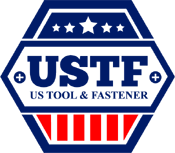Upselling a product or service is tricky business. When used appropriately, upselling can reemphasize the “customer first” mentality that should rest at the core of your remodeling business, as it prioritizes the highest quality services for your client’s needs and desires. To help your remodeling company navigate the maze of upselling services during a project, here are some useful insights and strategies to make sure you provide the best value for your client while also receiving the best profit returns as well.
Pitch Designs, Not Products
When approaching upselling, it’s important to make sure the offer is framed in a way that emphasizes quality design and experience, rather than expensive products. If your client is remodeling a kitchen, for example, and asks for a mid-range countertop material, ask if they’re aware of the benefits a higher quality material could provide. This way, you’re not pushing a specific product on them for the sole purpose of profit, but educating them on the best design options available.
Part of your remodeling company’s job is making sure that the client is educated on all of their options. Not every homeowner is an expert in remodeling equipment or materials, and it’s possible that their original vision for the project didn’t include certain upgrades simply because they weren’t aware of their existence. Upselling can be one of the ways to account for this, as it makes sure the client is fully aware of the kinds of products that are available to them.
Go Green
An easy way to upsell on a home remodel is to offer a sustainable option. A large percentage of people, especially younger generations, are very passionate about sustainability and offering products and services that support that lifestyle can be a great way to upsell a client while still focusing on their specific desires.
While solar power is the first thing that comes to my mind when thinking about sustainable services in the home, it’s far from the only one. For example, offering sustainable insulation materials and energy saving solutions as part of your remodeling project is a great way to help your customer save money on energy costs and preserve the environment as well. Some popular, effective options include everything from sheep’s wool to cotton to Icynene - a spray that’s naturally made from castor oil. Energy efficiency renovations are bound to be a big seller in the future.
Explain the Process
Earning the trust of a client is a foundational step in building a successful and lasting business relationship. One way to earn that trust is by involving your client in the renovation process whenever possible. This means giving consistent updates on progress, educating them on the products or services you’re using, and clearly outlining the cost and benefits of those products.
The key is always being honest about the initial cost of the upsell, so the client won’t feel exploited by surprise fees they weren’t anticipating. Once you explain how the higher cost will yield higher benefits in the long term, you can help bring the ideal version of the client’s vision to life.
Cater to the Client’s Needs
In the end, fulfilling the client’s needs are always going to be your company’s highest priority. If you know a higher-priced product won’t directly cater to the client’s needs, avoid pitching it to them. Instead, focus on pinpointing the areas where your client’s needs can be expanded or improved upon in order to create a better experience.
It pays to keep your eyes open during a project, too. If it’s apparent that your client has other remodeling needs, don’t hesitate to mention it after you’ve exceeded their expectations on the first project. In many cases, they may not be ready to start a new project, but letting them know you’re available to help could be just the foot in the door you need to get more repeat business.
When you understand a client and put their needs before your own, you’re building a strong business relationship that will not only make it easier to upsell them but can also lead to future projects that will benefit all parties involved.









